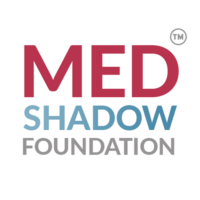Welcome to the FDA Side Effects Update. This series is designed to keep you informed about the latest safety advisories and newly documented side effects of your medications. In this installment, we’re highlighting safety updates concerning Doryx, Minocin, Nuzyra, Oracea, Pylera, Tygacil, and Rinvoq.
How to Read This Report
This report is prepared using the most recent information posted in the SrLC database. It highlights recent safety labeling changes. It includes only newly reported side effects and safety information; additional side effects and warnings will appear on the drug label. Not all recent changes to the SrLC database or the label may be listed here. For all changes and the complete list of warnings and side effects, please click on the drug label link.
Each of the items (approval and update dates, drug names, etc.) contained in this report are obtained from the SrLC. The side effects and medication descriptions are simplified and made clearer, if needed. Sometimes, additional sources, like a medical dictionary, may be used to translate technical medical phrases. Other sources (company news, FDA press releases, etc.) may be used to learn about some label changes.
Side Effect Update for Prescription Tetracycline Antibiotics
Antibiotics are drugs that fight a variety of infections caused by bacteria. There are seven main categories, or “classes,” of antibiotics, including tetracycline antibiotics. Drugs in the tetracycline class now carry updated safety labels warning of a serious skin reaction known as fixed drug eruptions (FDE), a form of hypersensitivity that causes rashes or blistering, typically recurring in the same spot each time the drug is taken.
With an FDE reaction, skin rashes or blistering worsen each subsequent time the drug is used. A very severe variant of FDE is “generalized bullous fixed drug eruption” (GBFDE), which can be life-threatening. If severe skin reactions occur, patients are advised to discontinue the medicine immediately and seek medical help.
These label changes were made in response to an FDA letter (here is one example) sent in December 2024 notifying drug sponsors that the required safety information should be added to the drug labels.
Two of the tetracycline antibiotics in this update (Doryx and Oracia) also have new warnings about psychiatric adverse events.
Doryx MPC (active ingredient: doxycycline hyclate) delayed-release tablets
Initial FDA Approval: 1967; this formulation was approved in 2005
Side Effect Update Date: March 31, 2025
Medication Description: Treats a variety of bacterial infections, including respiratory tract infections, sexually transmitted infections, “rickettsial infections” like Rocky Mountain spotted fever and tick-related fevers, anthrax, severe acne, and more.
Updated Side Effects/Safety Information: A new warning of the risk of a serious skin reaction called fixed drug eruption (FDE). FDE may present as a more severe variant known as generalized bullous fixed drug eruption (GBFDE), which can be life-threatening. The warning also includes risks related to psychiatric reactions, including depression, anxiety, suicidal ideation, insomnia, abnormal dreams, and hallucinations.
FDA Safety Announcement: Doryx MPC FDA Safety Label Change and Revised Drug Label. The revised drug label contains a complete list of FDA-approved indications, side effects, warnings, and more.
Minocin (active ingredient: minocycline hydrochloride) capsules and solution for injection
Initial FDA Approval: 1972 (for injection); capsule formulation approved in 1990.
Side Effect Update Date: March 31, 2025
Medication Description: Treats a variety of bacterial infections, including infections of the skin, respiratory tract, urinary tract, some sexually transmitted diseases, and others.
Updated Side Effects/Safety Information: A new warning of the risk of a serious skin reaction called fixed drug eruption (FDE). FDE may present as a more severe variant known as generalized bullous fixed drug eruption (GBFDE), which can be life-threatening.
FDA Safety Announcement: Minocin FDA Safety Label Change and Revised Drug Label (capsules) and Revised Drug Label (injection)
Nuzyra (active ingredient: omadacycline tosylate) for intravenous injection; tablets
Initial FDA Approval: 2018
Side Effect Update Date: March 31, 2025
Medication Description: Treats community-acquired bacterial pneumonia and bacterial skin infections.
Updated Side Effects/Safety Information: A new warning of the risk of a serious skin reaction called fixed drug eruption (FDE). FDE may present as a more severe variant known as generalized bullous fixed drug eruption (GBFDE), which can be life-threatening.
FDA Safety Announcement: Nuzyra FDA Safety Label Change and Revised Drug Label
Oracea (active ingredient: doxycycline) capsule
Initial FDA Approval: 1967; this formulation was approved in 2006.
Side Effect Update Date: April 2, 2025
Medication Description: Treats inflammatory lesions (papules and pustules) of the skin condition rosacea in adult patients.
Updated Side Effects/Safety Information: A new warning of the risk of a serious skin reaction called fixed drug eruption (FDE). FDE may present as a more severe variant known as generalized bullous fixed drug eruption (GBFDE), which can be life-threatening. The warning also includes risks related to psychiatric reactions, including depression, anxiety, suicidal ideation, insomnia, abnormal dreams, and hallucinations.
Essential Extras: The label states that this formulation of doxycycline has not been evaluated in the treatment or prevention of bacterial infections; it is only for the treatment of inflammatory lesions associated with rosacea.
FDA Safety Announcement: Oracea FDA Safety Label Change and Revised Drug Label
Pylera (active ingredients: bismuth subcitrate potassium; metronidazole; tetracycline)
Initial FDA Approval: 2006
Side Effect Update Date: March 31, 2025
Medication Description: Treats Helicobacter pylori infection (H. pylori) and duodenal ulcer disease associated with H. pylori. Should be used as a combination therapy with omeprazole (a stomach acid-reducing proton pump inhibitor).
Updated Side Effects/Safety Information: A new warning of the risk of a serious skin reaction called fixed drug eruption (FDE). FDE may present as a more severe variant known as generalized bullous fixed drug eruption (GBFDE), which can be life-threatening.
Essential Extras: H.pylori is the leading cause of peptic ulcers.
FDA Safety Announcement: Pylera FDA Safety Label Change and Revised Drug Label
Tygacil (active ingredient: tigecycline) and Tigecycline (generic) for intravenous injection
Initial FDA Approval: 2005
Side Effect Update Date: March 31, 2025
Medication Description: Treats complicated skin infections, serious abdominal infections, and community-acquired pneumonia.
Updated Side Effects/Safety Information: A new warning of the risk of a serious skin reaction called fixed drug eruption (FDE). FDE may present as a more severe variant known as generalized bullous fixed drug eruption (GBFDE), which can be life-threatening.
FDA Safety Announcement: Tygacil FDA Safety Label Change and Revised Drug Label Tigecycline FDA Safety Label Change and Revised Drug Label
Rinvoq (active ingredient: upadacitinib) extended-release tablets
Initial FDA Approval: 2019
Side Effect Update Date: April 25, 2025
Medication Description: Treats rheumatoid arthritis, ulcerative colitis, eczema, and most recently received expanded approval to treat giant cell arteritis (GCA) in adults.
Updated Side Effects/Safety Information: New warnings for adverse reactions that may occur when taking Rinvoq for giant cell arteritis (GCA). These include upper respiratory tract infections, headache, fatigue, swelling (edema), cough, anemia, rash, herpes zoster (shingles), and nausea.
Essential Extras: Read more about giant cell arteritis (GCA) at Medline Plus and in Rinvoq’s press release about the new approval.
FDA Safety Announcement: FDA Supplemental Approval Letter and Revised Drug Label






